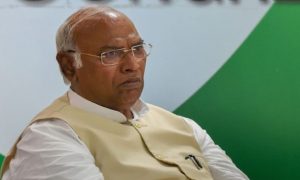Successful retirement planning should strike a balance between realistic return expectations and the desired standard of living
The time to repair the roof is when the sun is shining” – John F. Kennedy
It is often said that life begins at 60. Usually at this age, people retire and pursue their long-cherished dreams. For some, it might be travelling and exploring new places whereas some may want to learn a new skill or even start a new hobby. However, the phase of retirement also means that the flow of income would be dried although the expenses would still continue.
India used to be a nation of big and joint families, where younger generation used to lookout elderly people. However, with the large-scale urbanisation, the families have started to shrink and nuclear families are on the rise. As per a CRISIL report published in March 2019, the average family size which was 5.7 members in 1992 has shrunk to 4.6 members in 2015. Thus, the pillar of support to the elderly population is on the decline. In light of this, it cannot be stressed enough that appropriate retirement planning is imperative in today’s unpredictable world.
Retirement plans are referred to as pension plans. The main objective behind a retirement plan is to have a regular income stream post-retirement. Given the ever-growing inflation, investing in these plans has become paramount and a pre-requisite to sustain retirement.
Pension plans primarily have two stages viz. the accumulation stage where you pay an annual premium till the age of retirement to pool funds and the vesting stage where post-retirement, you start receiving annuities.
There are multiple options to choose from, while selecting a retirement plan suiting specific requirement.
- National Pension Scheme (NPS): National Pension Scheme is a retirement-oriented scheme where, in addition to the monthly pension payments, a lump sum amount is additionally paid at the time the investor attains the retirement age. In the event of death of a subscriber, the nominee/legal heir is can withdraw the accumulated money. Atal Pension Yojna (APY) which comes under NPS, was launched in the year 2015 and has seen tremendous response from the subscribers. As of January 2019, it had 1.38 crore subscribers and assets under management of Rs. 6,177 crores.
- Public Provident Fund (PPF): Public Provident Fund is a long-term investment plan with a lock-in of 15 years, which means funds invested cannot be withdrawn before 15 years. After the expiry of lock-in period, funds can be withdrawn only in lumpsum which essentially means that the PPF does not provide the facility of monthly pension. Since nomination facility is available, in the event of death of the investor, the nominee will be eligible to get the amount of PPF even before the lock-in period of 15 years. However, the nominee cannot continue the PPF account of the deceased.
- Employee Provident Fund (EPF): Employee Provident Fund is predominantly for salaried employees where both employer and employee contribute equally to a common fund and upon retirement, the employee gets the principal amount (his/her contribution plus employer’s contribution over the years) as well as the accrued interest thereon. In the event of death of the employee, the EPF amount will be paid to his/her registered nominee or to the immediate family member/legal heir in case no nominee was assigned earlier.
- Insurance Plans: Apart from securing health and life, there are insurance plans that provide for retirement benefits. These can be of two types: Unit Linked Insurance Plans (ULIP) and Annuity. Under both the options, a regular premium payment is required. While in annuity plans, the investor gets either lumpsum or regular payments post retirement till his/her death, ULIPs provide dual coverage viz. life insurance as well as a cover for retirement. In ULIPs, in the event of death of the investor, his/her nominee(s) gets sum assured from the insurance provider. As on 31st March 2020, the total assets under management of ULIPs was Rs. 3.73 lakhs crores and the total number of annuity policies were 23 lakhs.
An investor may choose any retirement pension fund based on his/her requirement and preference; however, the following key factors merit consideration:
- Inflation
The long-term investment must guarantee a positive return post inflation. For example, if the rate of inflation is 6% p.a., the value of Rs. 100 today will be equal to Rs. 94 after one year. Thus, if the investment in a pension fund gives a return of less than or equal to 6%, it will not be a viable option for planning retirement.
- Adequate Coverage
While choosing a retirement pension plan, one must ensure to receive adequate pension income post-retirement which should be sufficient to meet the expenses as well as a backup for emergency requirements.
- Assured Return and Low Risk
The investor may not prefer to seek more risks at the time of retirement. Thus, it is important to stick to guaranteed return on investments and further, the investments should reflect the low-risk corpus to fight the increasing market volatility.
- Annuity
Another pertinent consideration is the amount of annuity offered. There are various retirement pension plans which differ in terms of annuity offered. Some plans may provide annuity payment only for a certain period post-retirement and some may ensure the regular pay-out till the death of the person. There are plans which assure the annuity to the nominees even after the demise of the assured person.
- Diversification
“Never to keep all your eggs in one basket” is the fundamental principal of investments. Hence, before zeroing in on any plan, it is pertinent to check how diversified the pension fund is. Additionally, if it is possible, one can opt for more than one pension plan. A well-diversified retirement fund will ensure that the corpus is least affected during any unforeseen economic event in future.
- Taxes
Taxes are probably the most important factor to consider while choosing a retirement plan. The taxation aspect shall differ based on the type of pension plans and the risk appetite of the investor.
Mechanism of Investment in Various Retirement Funds
Usually, a subscriber can subscribe to the above-mentioned plans either online or offline.
- Online Mode: Under this mode, the investor needs to visit the respective website (for NPS https://enps.nsdl.com/eNPS/NationalPensionSystem.html) and respective bank or post office website for PPF and upload the required documents like Aadhar card, PAN card, photograph, nominee details, bank account details, etc. The investor may need to deposit a certain amount as initial investment.
- Offline Mode: The investor will need to visit the point of presence (POP) which are usually banks enrolled with Pension Fund Regulatory and Development Authority of India (PFRDA) in case of NPS and fill the required form and documents. In case of PPF, the investor needs to visit any approved bank or post office
- The EPF accounts are opened by the employers for which they need to register themselves as establishment on the Employees’ Provident Fund Organisation (“EPFO”) website.
- As far as insurance policies are concerned, the investor needs to first ascertain the insurance provider as per his/her requirements and accordingly either visit their website or branch office or insurance agent to buy a ULIP or annuity.
Tax Implications for Various Retirement Plans
- Accumulation stage
- Investments in PPF, annuity, employee’s contribution to EPF, are tax deductible up to a maximum of Rs. 1,50,000 p.a.
- In case of EPF, employer’s contribution over and above Rs. 7,50,000 in a financial year is taxable.
- Employer’s contribution to NPS is deductible up to 10% of employee’s salary.
- NPS contribution provide a further deduction of maximum Rs. 50,000 in respect of employees’/ subscriber’s contribution.
- For self-employed persons, 20% of gross total income up to a maximum of Rs. 2,00,000 is tax deductible.
- Vesting stage
- Interest accrued on PPF and amount received after the lock-in period of 15 years are tax-free.
- Withdrawal from the NPS account post retirement is tax-free. However, only 60% can be withdrawn post retirement. Remaining 40% needs to be kept as the corpus to ensure that regular pension can be received from the scheme.
- Lump sum amount received from EPF on retirement is exempt from taxation.
- The annuity payment post retirement is taxable
Conclusion
Retirement planning is one of the crucial aspects of financial planning. Successful retirement planning should strike a balance between realistic return expectations and the desired standard of living. One should try to build a flexible portfolio that will help to lead a peaceful and worry-free retirement. As per the CRISIL report published in March 2019, pension penetration in India is estimated to be substantially low at a meagre 24% of the population above retirement age, compared to over 70% for other Asian peers like Japan, China and the Republic of Korea, which implies that not many people radically plan for their retirement and are still dependent on their immediate family for post-retirement monetary needs. It is pertinent on the part of the Governments as well as private stakeholders like employers, to generate more awareness towards the necessity of proper retirement planning that will help people viably secure their future.



































